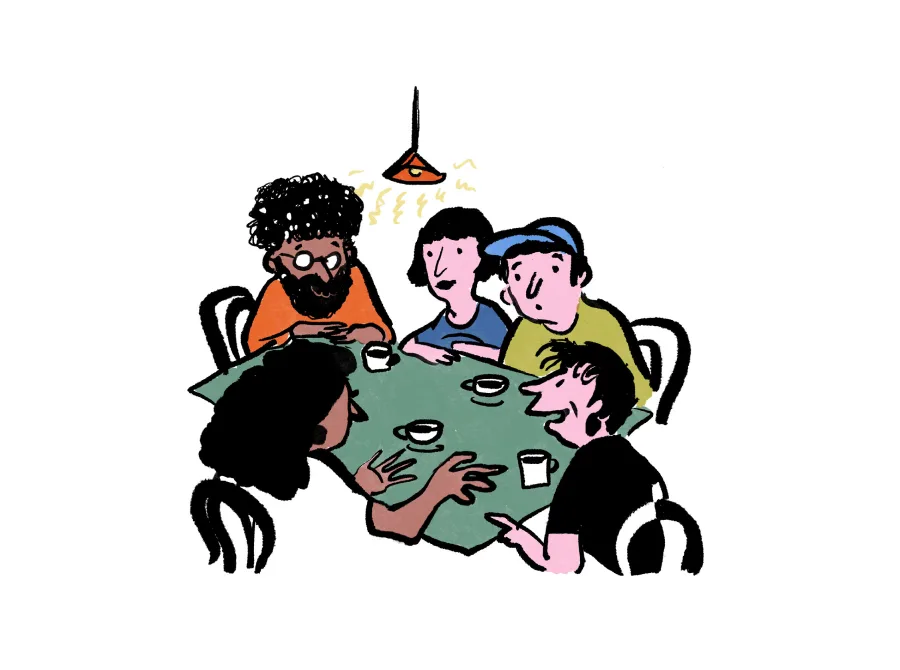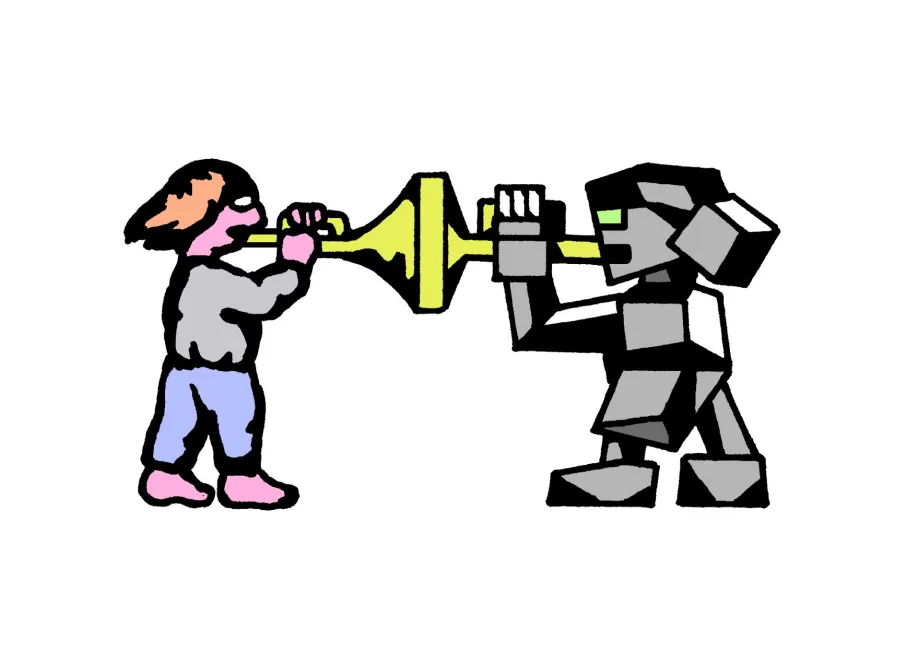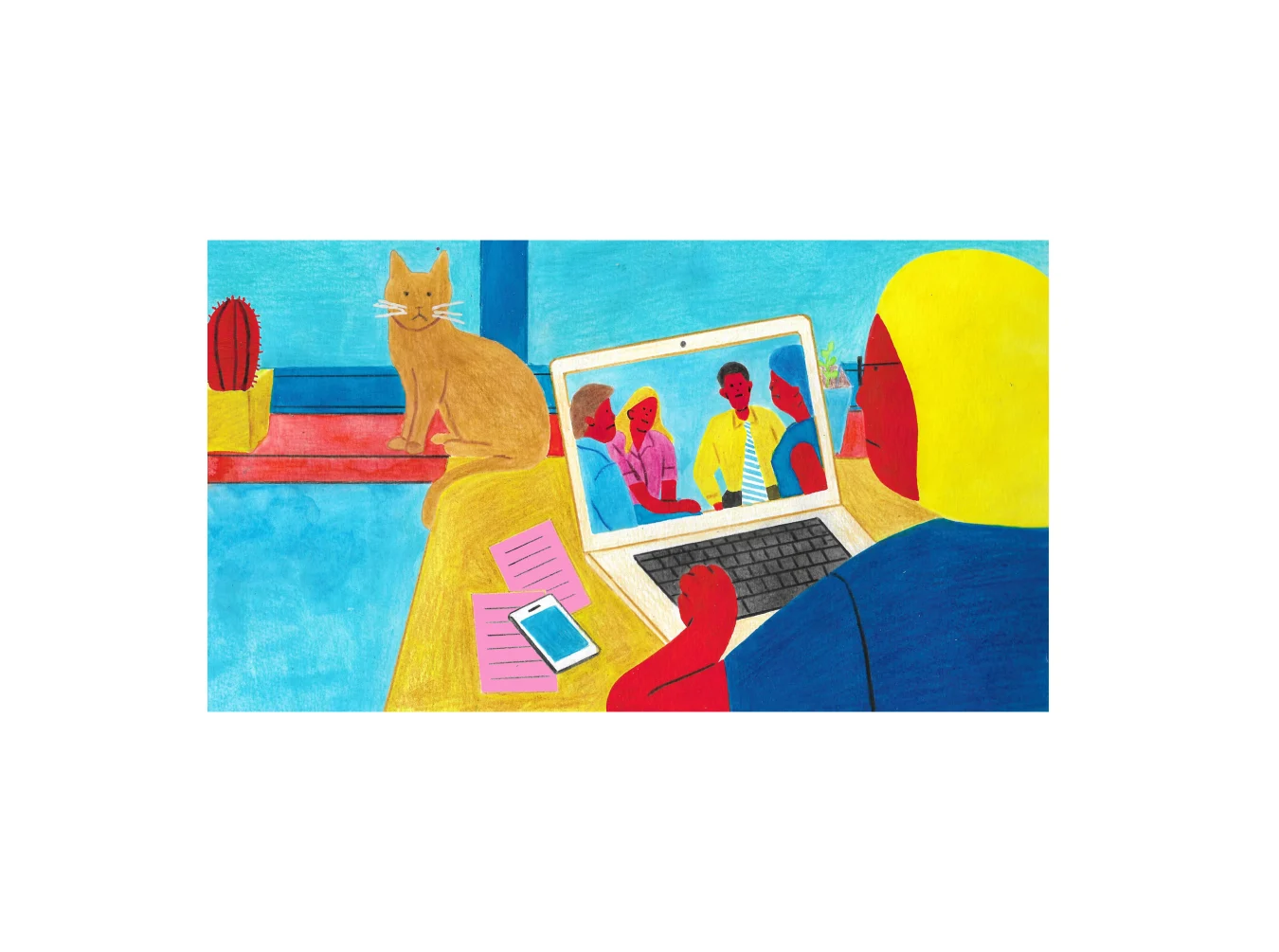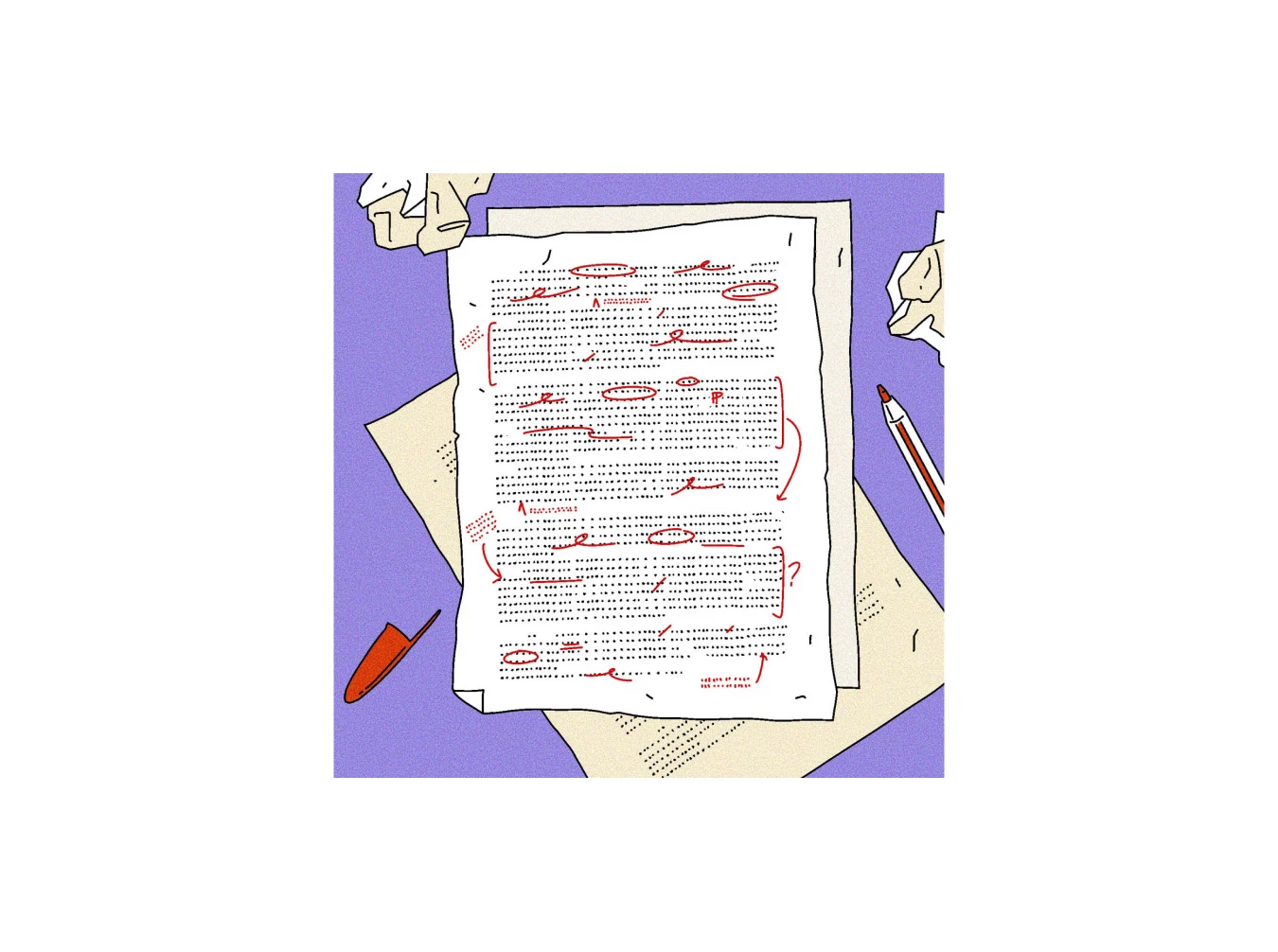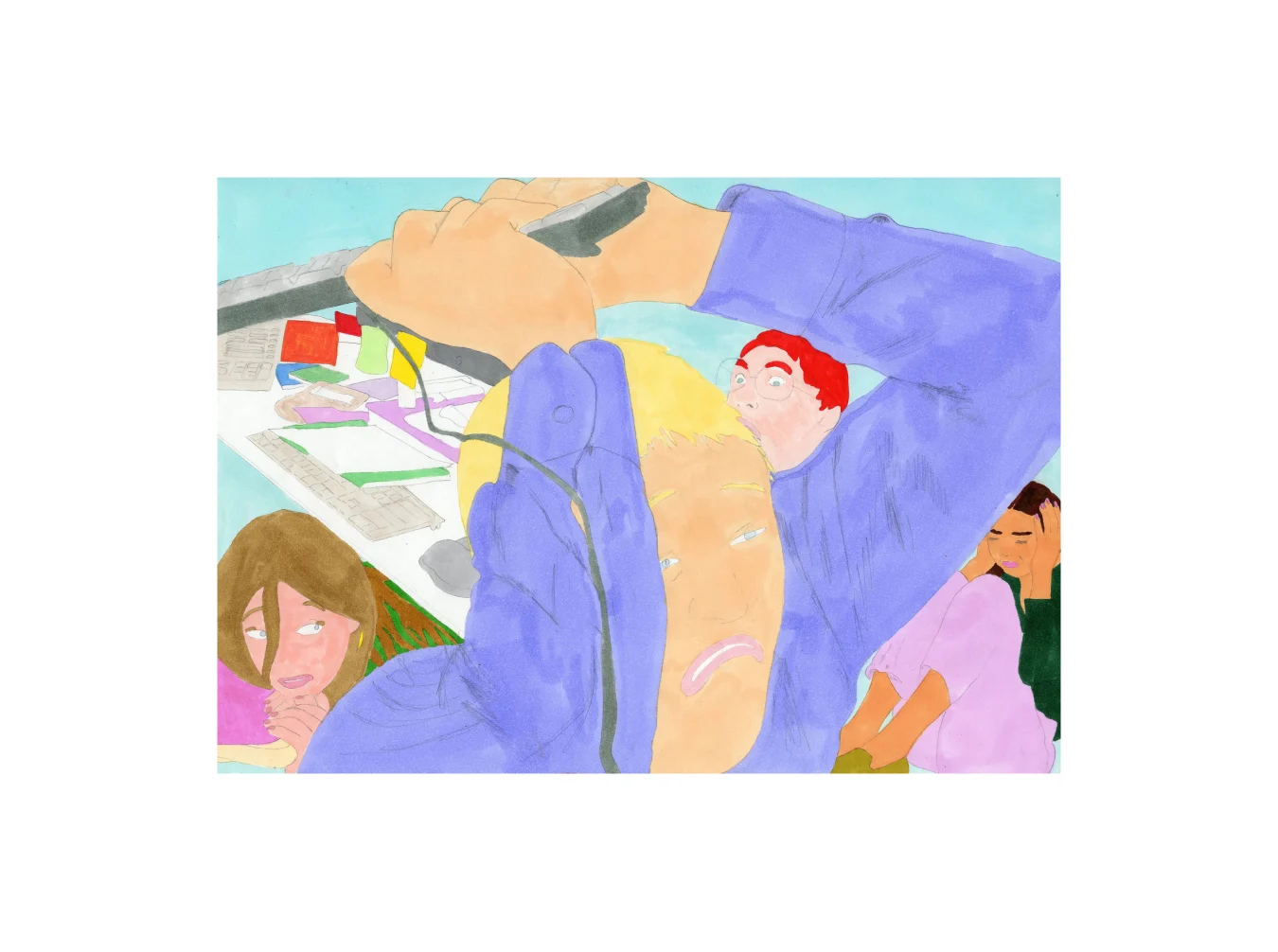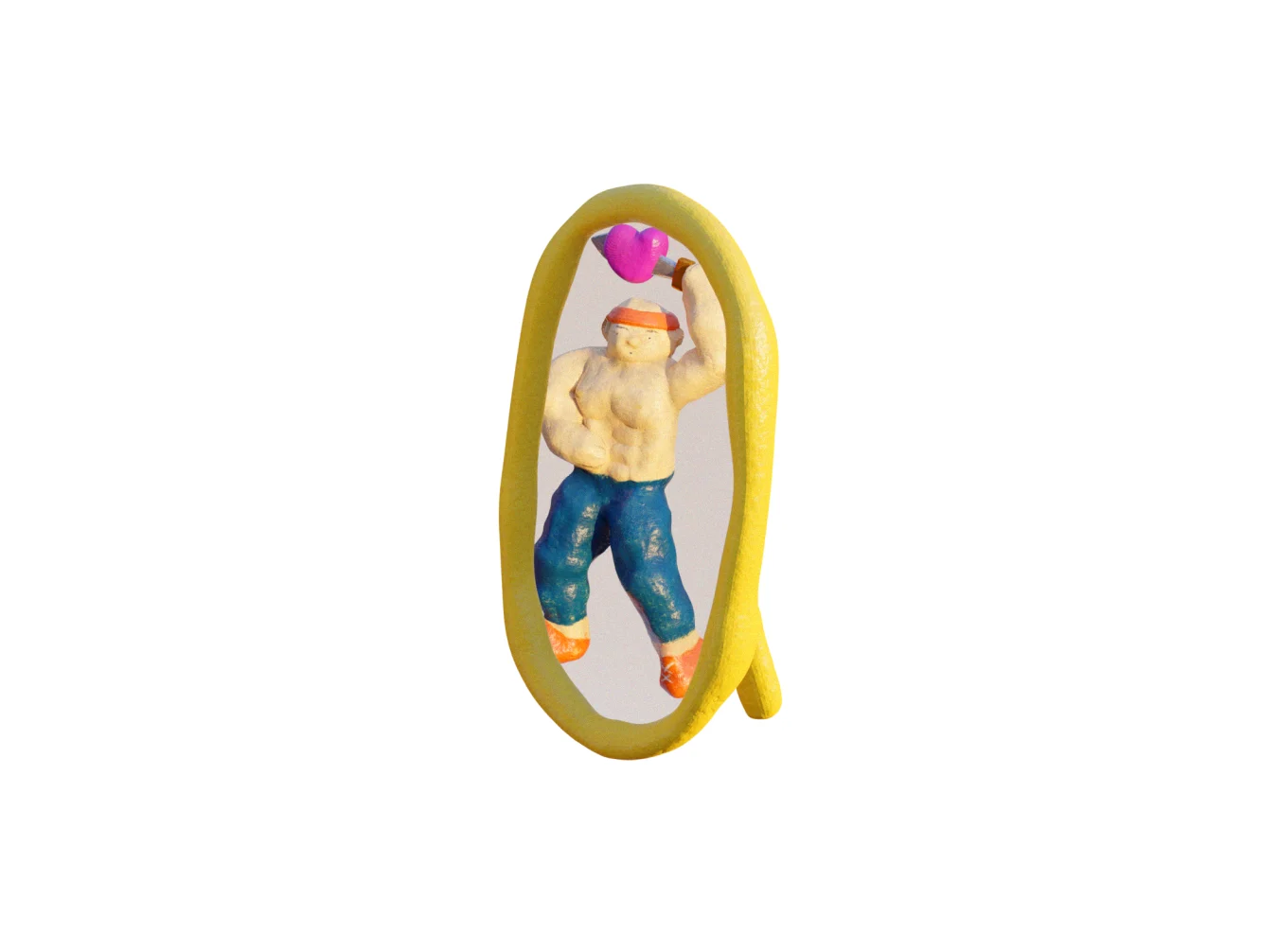

There are lots of things for creatives to think about beyond having good ideas. We’re here to help, with our advice series Stuff They Don’t Tell You. In this edition, James Cartwright delivers a six-point plan for effective pitching, with a little help from some seasoned creatives.
Illustrations by Pete Sharp.
In 2017, director Ali Kurr spent three days creating a scale model for the set of a music video she was pitching. Her concept for Bubblegum, then the latest single from Brighton rock outfit Yonaka, was a remake of Steve McQueen’s 1958 film debut, The Blob – the actual blob recast as a sleek, silky pink invader to whom the rest of the cast is inexplicably sexually attracted. Her deck included elaborate shots of her DIY handiwork, animatic references of the blob as a slightly less seductive water balloon and a short sizzle reel to give the band a clear idea of her aesthetic intentions for the project.
“I sent it all out and heard nothing,” she says. So she decided to do what any reasonable person would do and stalk the band’s lead singer on social media. Then she stalked her in real life. “I found out where she lived, and I found out that we had a mutual friend and I managed to get her phone number through someone who didn’t really know me. I cold-called her, sent her the video and really annoyed the commissioner, but she loved the idea and we ended up making it.”
Pitching your work to new clients is an everyday part of working as a freelancer, whether you’re a copywriter, graphic designer or music video director. Sometimes that process may require the careful consideration of typefaces and finessing of the narrative arc in your 35-page pitch deck, other times the only way to get the job may well involve a little bit of stalking.
No creative project ever turns out how you expect at the start, because creativity is exciting, vulnerable, challenging and every other emotion under the sun.
While Ali’s approach isn’t necessarily orthodox, and approached the wrong way could lead to a court order instead of a commission, it does confirm a single inalienable truth about pitching: “Every pitch is different,” says James Greenfield, founder and director of Koto design studio. “The key is to show you’ve done your thinking and you’re not just saying ‘Look at this genius we’ve been cooking up.’”
Most freelancers have been guilty of wanting to reveal their creative genius at some point in their career, but unless you can back your genius up with clear communication of your ideas, the process is worthless. I once got so distracted putting together a shiny deck for a client I forgot that I’m not actually a graphic designer and it was the quality of my writing and communication that was really important. The deck was visually arresting but the writing sucked. I didn’t get the job. Now I send all my pitches as pedestrian Google Docs and I make sure that they’re clear and well reasoned but totally free of bells and whistles.
Of course, a pitch for a book is wholly different to a pitch for a music video or for a brand redesign. The process for each is unique. Fundamentally though, the success of each hinges on having a clear understanding of your audience. That’s equally true when you’re pitching for venture capital funding for your first start-up. “Often it has nothing to do with your presentation, your pitch, your talk, your team or anything,” says Georg Petschnigg, CIO and GM of Paste, a program by WeTransfer that allows people to make fast, collaborative presentations for creative teams. “It's just an outcome of the mechanics of how they invest. Certainly you can deliver a great pitch, but if the audience is just the wrong audience then that’s all there is to it.”
And so, we find ourselves at tip number one of our six-point plan for successful pitching:
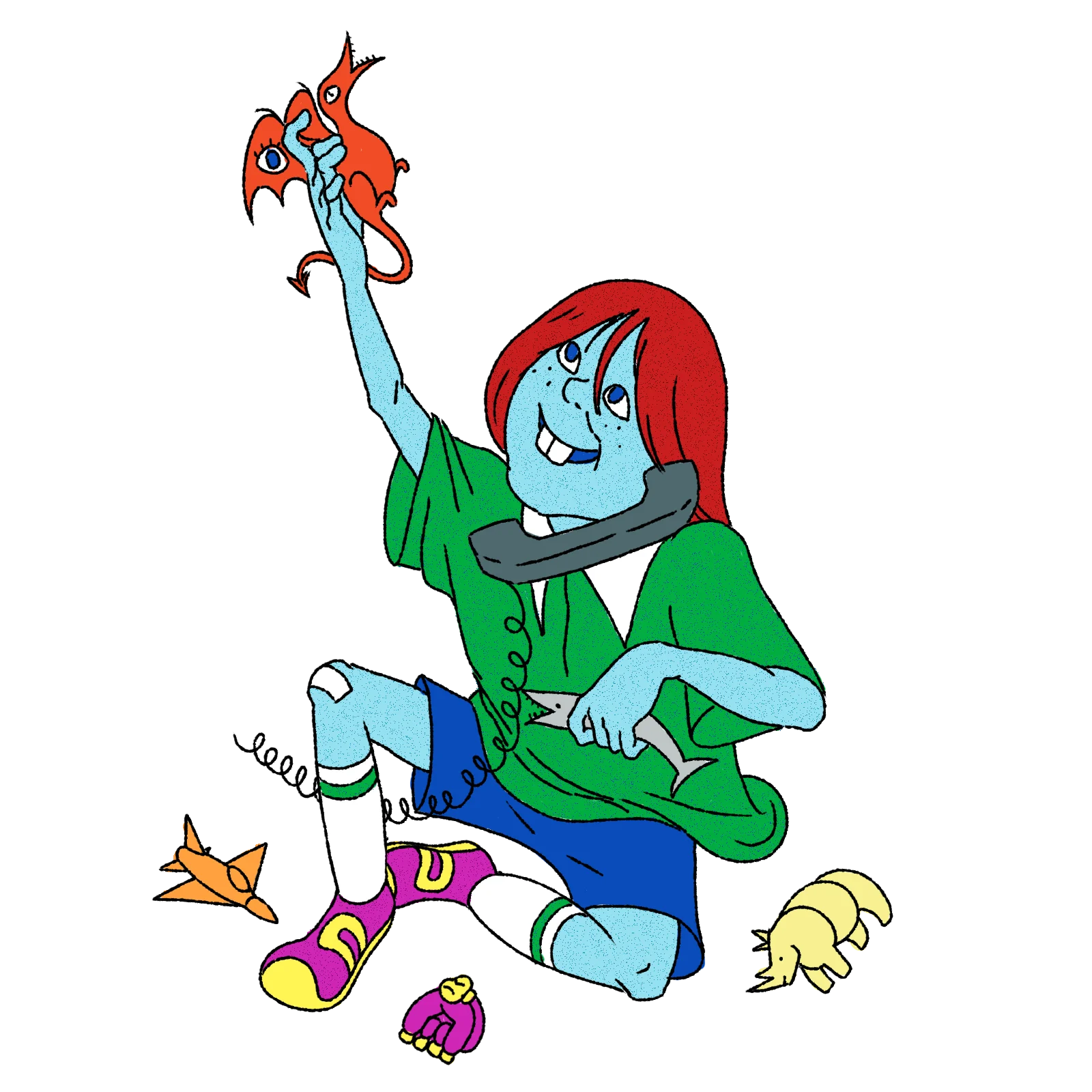
Get to know your prospect
Pitching a creative idea is all about packaging it in a way that makes sense to your audience, and as anyone who works in advertising will tell you, understanding your audience properly is the only way to sell them anything. How you go about this process will depend entirely on the line of work you’re in, but you should never go in cold.
“We normally start relationships with a couple of chemistry meetings,” says James, “and we often share ideas in these. Then we have a number of working sessions to look at what we have, what we think is missing and how we might find it or make it. We normally then ask the prospective client for a Q and A session to fill any knowledge gaps. We can then work through all the ideas we have about a project, however mad cap, and make an extensive shared document.”
If this seems like too long-winded a process for a small piece of work, a phone call should suffice. When writers pitch ideas to me for the magazine I edit, I’m always more than happy to have a chat about what the title is, what we’re looking for and any gaps in the current issue that could be filled by the writer’s pitch and I’m much more likely to commission someone who’s taken the time to pick up the phone or buttered me up with a coffee.

Don’t present the finished product
It’s tempting to think that the best way to win a pitch is to present a fixed and finished idea that your client will take on board in its entirety – the Don Draper approach. But, you know, that guy is fictional, or at least a relic of a past that no longer exists.
“Pitching is not about winning the argument,” says Georg. “It’s much more important that you establish the right expectations and working relationship with the other party. Maybe you do have all the right ideas, but if you’re working with great people and great clients, those ideas are only going to get better as the work happens. Nothing is ever completely figured out at the beginning.”
James agrees. “I find it frustrating that other agencies are selling these complex diagrams and saying things will run exactly this way. They are either not very creative or basically lying to win the work. No creative project ever turns out how you expect at the start, because creativity is exciting, vulnerable, challenging and every other emotion and feeling under the sun.”
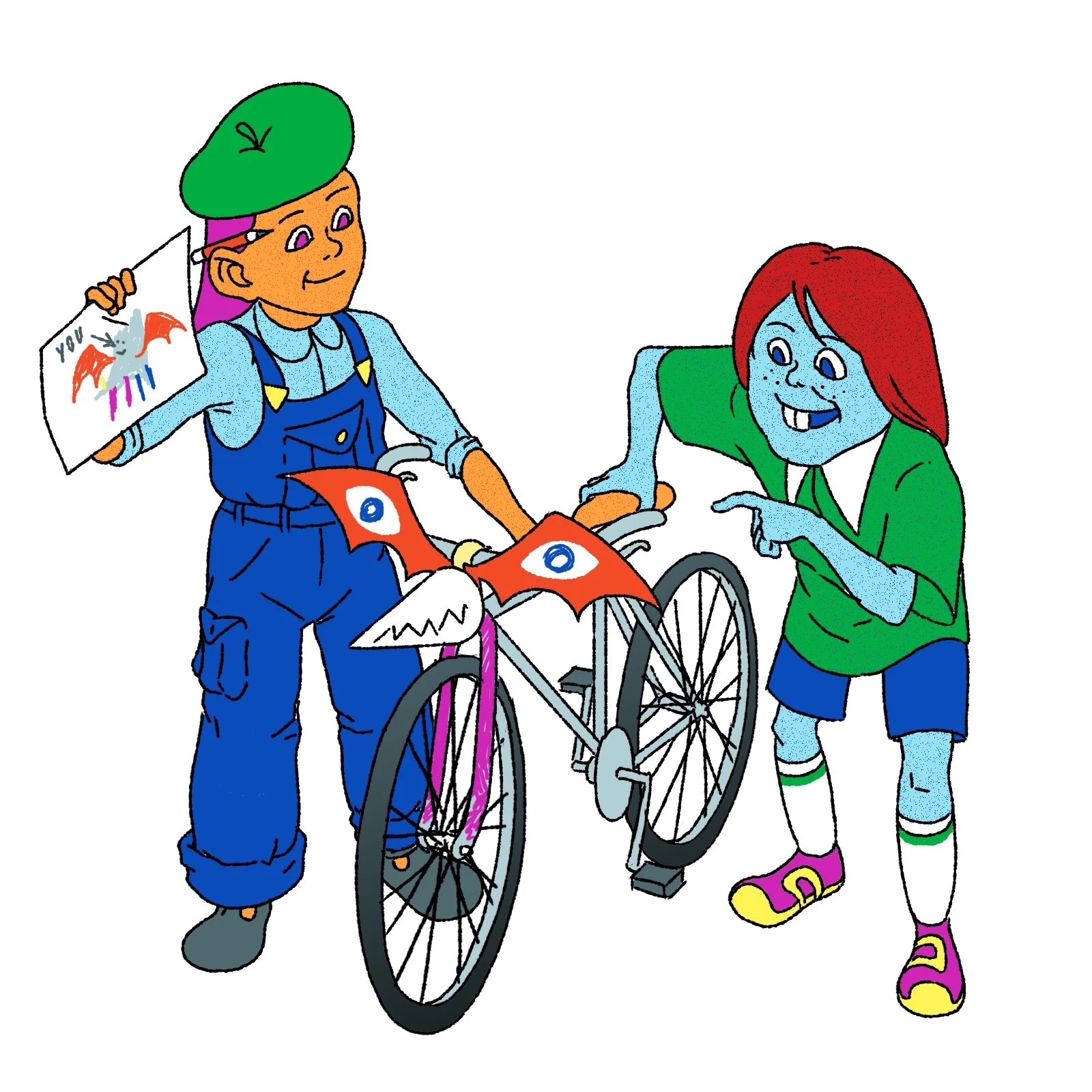
Make it easy for your clients
I say this with caution, but a lot of people responsible for commissioning can often be quite unimaginative and nervous about embracing new ideas. A lot of art directors commission illustration that’s identical to things they’ve seen before. Hollywood is now just one great loop of regurgitated content. So if you want to make work that breaks new creative ground then make it as easy as possible for your client to understand. Research, prototype, “make a sizzle reel” says Ali. “It’s when you make a mock-up of the whole video from existing footage. They’re a total pain in the ass to make but I’ve had a 100 percent success rate pitching with sizzle reels.”
The medium is the message
The medium that you choose to pitch in should reflect what it is you’re pitching, and who you’re pitching to. In some industries, the pitching process is tried and tested. In the world of branding, the deck is king. “We will almost always have a deck,” says James. “It captures the pitch, can be read again by the client afterwards and is a good summary of the story. Some are more written, others more image-led, but we always want it to be a narrative arc that explains our thinking using some logic and some imagination.”
Georg advocates what he believes to be a more transparent process. “I think we’re approaching a place of great fatigue with keynote presentations,” he says. “One of the reasons we developed Paste was to develop a more transparent way of sharing ideas that can include more voices and engage your clients in a more iterative format.” If your client wants iterative, then make sure they get it.

Don’t take no for an answer
Sometimes your initial pitch will get knocked back, but if you follow up with a client then it’s often possible to turn things around. “There are loads of people I know who are better directors than me, but they've not necessarily had the same commercial success and I think that's only because I won’t take no for an answer,” says Ali. “You just have to learn to coerce people. I'm pitching on a job at the minute for a music video for a big band. I know I’m down to the final two and I’m definitely just going for it. I’ve made them a second treatment, sent them another video and I’m contacting everyone I know to try and get the band’s number. If I can get on the phone to the artist then I know I have a better chance.”
But also, get used to taking no for an answer
“I’ve pitched on loads of stuff that I've not won,” says Ali. “I’m normally sending out two pitches a week or something and I reckon I've got a one in seven success rate.” Sometimes you just have to let it go.






